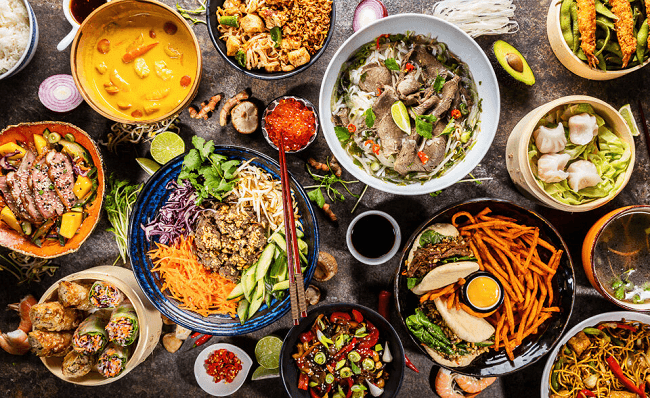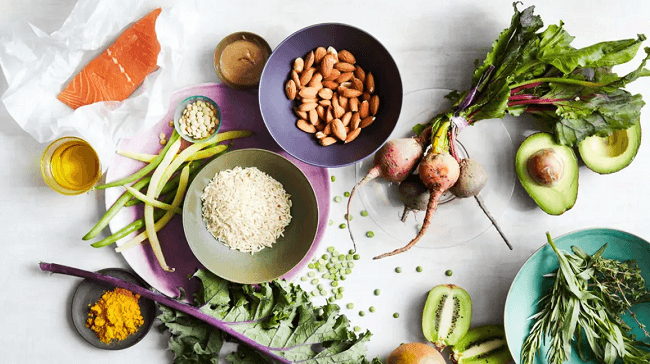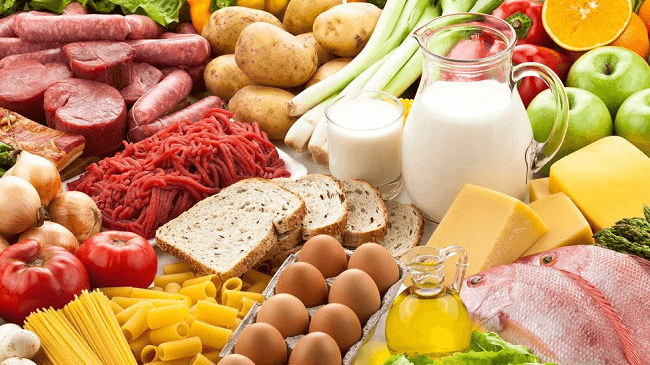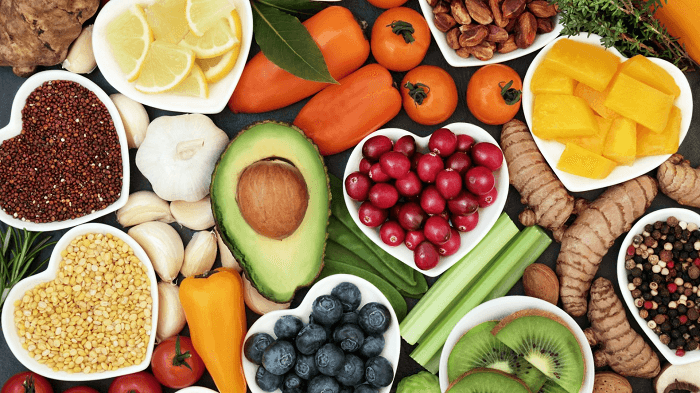Advantages and Disadvantages of FoodFood is one of the basic requirements of life. Food is rich in regulating vital organs, which is essential for the growth, maintenance, and repair of the body and tissues. Nutrients give the necessary energy for the body to operate. 
The energy present in the food is calculated in units called calories. Determining factors are level of activity, age, weight, and sex, and based upon that number of calories a person is required per day is measured. The calorie consumption for children between 11 and 14 is measured between 1600 and 26,00 calories/ day. For adults, its value stands between 1800 to 3000. Types of NutrientsExperts have divided the nutrients into six components: Water, Carbohydrates, Proteins, Minerals, Fats, and Vitamins. Foods are rich in most of the nutrient groups in varying amounts. Energy is received from Carbohydrates. Almost all the carbohydrates that we intake comes from the plant. It includes starches from the starches found in cereal grains and plants like yams and potatoes. Sugars are located in milk, vegetables, and fruits and are also rich in carbohydrates. Sugar beets and sugars are cultivated for their high sugar content. Starches and sugar that we consume are turned into corn syrup and flour. These processed carbohydrates are used in pies, cakes, cookies, pasta, and bread. Fats offer more than twice as much energy as compared to carbohydrates. It also helps in insulating and protecting the internal organs of our body. Some common fats include vegetable oil, corn oil, soybean, and cotton seed. These are widely applied in the cooking and processing of many foods. Animal products also give fats, and animal product includes such as lard and butter. The presence of high levels of fats can also be seen in poultry, milk, cheese, eggs, and cheese. The body's chief tissue builders are proteins. They help keep our blood, skin, and bones healthy. Proteins are vital in regulating bodily processes such as the transportation of oxygen and nutrient to the cells, the clotting of blood, and the development antibodies that help combat diseases. Animal products such as dairy products, fish, eggs, beef, fish, and poultry are rich in protein. Proteins-rich foods also contain beans, nuts, and grains. 
Micronutrients are composed of vitamins and minerals as they are required in small quantities compared to proteins, fats, and carbohydrates. The macronutrient is composed of proteins, fats, and carbohydrates. Minerals give necessary building materials for the body and regulate its functioning, similar to proteins. Phosphorus and calcium make bones stronger and teeth, iron contributes to healthy blood, and iodine helps maintain the thyroid gland's function. Vitamins are very vital component as it helps in making full use of other nutrients by providing the necessary chemical reaction that makes these nutrients work. For example, thiamine and B1 help regulate the release of energy from carbohydrates, facilitate a healthy appetite, and help the functioning of the nervous system. Vitamin D promotes the maintenance and growth of healthy bones. Other important components of a healthy body include fiber, oxygen, and water. Some experts put water on the list of basic nutrients. Half of a human's body weight is composed of water. It is involved in almost every body process, such as regulating temperature, movement of key nutrients into the cells, and removing waste products from the cell. Oxygen is not categorized as a nutrient since it is breathed, not eaten, but very important component for maintaining life. 
Fibre is an indigestible material located in plant foods. It adds more bulk to the diet plan and keeps your intestines healthy. Fibre-rich foods include vegetables, beans, whole grains, and fresh fruits. A healthy diet comprises a balanced mix of foods that give important nutrients. The lack of a balanced diet is referred to as malnutrition. Undernutrition is a form of malnutrition, and it is connected to hunger. This condition occurs when the body cannot meet all its needs. Death can also occur due to starvation. 
To select a balanced amount of nutrients, people need to select from a range of foods: meat, poultry, legumes, fruits and vegetables, eggs and milk, and dairy. Advantages of Food1. Provides Energy Food provides energy to the body. In the absence of energy, the body will not function smoothly. Foods provide essential nutrients that require to keep the body alive. 2. Maintenance and Weight Loss Controlling high-calorie food is very important for maintaining and achieving a healthy weight. Intake lean protein, whole grain, fruit, and vegetables to replace high-calorie food. Fiber-contained foods like vegetables, fruits, and whole grains will keep you longer than foods with high sugar content. 3. Good for Mental Health Food is as good for your body as for the brain. Several neurological problems are connected directly connected with unhealthy food consumption patterns. Some deficiencies in the food nutrient increase the chances of depression in your mind. The nutrients that are involved in the brain cell are potassium. A healthy, varied, balanced diet keeps your mental peace stable and properly working without hiccups. 4. Improves Your Mood Foods keep your mood light even in the depression situation and tension. It keeps your energy level high. Higher energy levels help you in doing the work more efficiently and effectively. Lighter moods help you maintain a work-life balance. 5. Avoid Many Health Diseases Fruits and Vegetables contain antioxidants. These antioxidants help eliminate potentially damaging cells, referred to as free radicals. These free radicals are loaded with an uneven quantity of electrons, which makes them highly unstable. They tend to steal electrons from healthy cells, making them suffer greatly. Antioxidants help eliminate free radicals by giving one of their electrons, which changes one free radical into a stable molecule. A moderate amount of fats in seeds, fish, nuts, olive oil, and avocadoes protects your heart. Carbohydrates such as brown rice, grain bread, and oat would help slow the sugar release into the blood and regulate blood sugar. 6. Combating Hunger Food plays a crucial role in combating hunger. It satisfies the man with all important nutrients and erases hunger. Hunger is the condition where a person is not able to get food. Hunger leads to weakness and death of a people. 7. Erasing Malnutrition Malnutrition and stunting are present in every child. It occurs due to a lack of food in the children. Their growth process can be enhanced with a balanced diet. Those people who suffer from malnutrition belong to poor sections of society. So, it becomes essential to them that Government serves a simple, balanced diet to erase the problem of malnutrition so that they can fully contribute to the economy's growth. Disadvantages of Food1. Adulterated Food Adulterated food is very harmful to the body. People should avoid eating contaminated food and take healthy food for its consumption. 2. Inorganic Food Food produced today is with the use of chemicals. They are not organic in their approach. It also affects human health and becomes a trigger point for several diseases in Human beings. 3. Food Security Food security is an emerging challenge. The world has a limited capacity for producing grains, but the population is growing. With the long wars, bad weather, and pandemics, this condition is coming. 4. Costly Organic foods are scarcely available in the market, and they are expensive in the market. They require special maintenance and equipment to store them. Special transportation measures must be arranged because these organic products are grown in far-flung areas. The price of nutritious food keeps fluctuating and does not remain stable. 5. Specialized Requirement of Information In this modernized world, it has become common for people to have some basic knowledge of what is healthy and unhealthy. This adds more pressure on the consumer. 6. No Alternatives More than half of the parts of the world's land is under the ice sheet. There is no scope for agriculture on them. They have imported food from other countries to fulfill their requirements, and these exporting nations tried to dominate it. An alternative in the liquid could fill the stomach's appetite. 7. Diseases All foods are not productive and provide a healthy body. A highly fat-contained body gives rise to various diseases and is vital for health. Some of the listed chronic diseases are Cardiovascular diseases, Overweight/obesity, High Cholesterol, Abnormal Blood Lipids, and High Blood Pressure. |
 For Videos Join Our Youtube Channel: Join Now
For Videos Join Our Youtube Channel: Join Now
Feedback
- Send your Feedback to [email protected]
Help Others, Please Share










